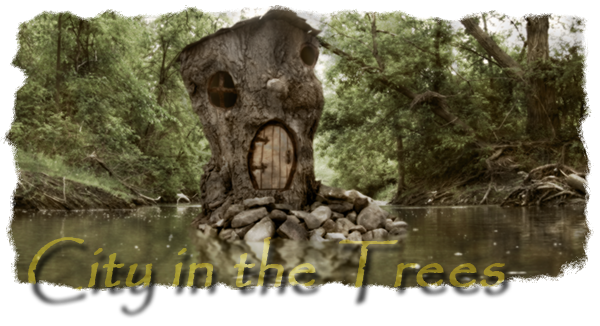On a Tuesday not quite two weeks ago, I drove down to the Thornhill branch of Henry's, a Canadian camera chain, at lunch time to buy a Fat Gecko suction cup tripod for my car in anticipation of getting a FujiFilm FinePix 3D W1 camera in the spring. In the process of doing so, I noticed they already had a counter set up for the camera and a price for it ($699). I inquired and found out they'd already received their first shipment and blown through them on the first day. I put in for a pick of the next litter, and was told to expect the arrival in about two weeks. Despite the fact I've been trying to pay down my credit card, I was happy I'd left a few open spots on my dance card. The world's first commercial 3D digital camera doesn't come along every day.
As it turns out, my camera arrived the following Friday. I picked it up that evening.
I've been using it for the past week or so. The image quality is what I'd call passable. It's noisy, even at ISO 100. But I went into this with my eyes open. This is a new technology; basically, two cameras wedded together. For reasons I'll get into in a moment, I felt it was important to adopt this technology as soon as it was feasible, even if the output was marginal.
A couple of years ago, I started mulling over what I've come to call The Millennium Project. I started shooting digital images in February of 1997, well over ten years ago. I have something like 120,000 stills and videos now, even with the stuff I've lost from early on. Since one of my hobbies is comparing old photos of familiar places to what I know now, it's occurred to me that, if I start cataloging my efforts now, the things I've recorded might be of use and value to someone like me in the future. Since I started just before the turn of the century, well... "The Millennium Project".
Think of the advantages we have now. We have colour. We don't have to develop film, or print from negatives. We can adjust, clarify, and enhance our images digitally with an ease that would have astounded people just 20 years ago. Add to that now the ability to easily capture a scene in three dimensions on the fly. Yes, we've arrived at that point, if only just. I have that capacity. And I think in the future, that's going to be very important.
The Toronto Public Library has a many thousands of the Toronto Reference Library's images online, and they're searchable. Lately, they've updated the selection with a whole new raft of images; ones from the 1940s, and 50s, and beyond. These are often images right at the cusp of change in what's now the mid-range areas of town, which were back then the rural fringe. Hard to image now, but it was the case when people who are still working now were children. Some of the images have been truly remarkable to me, and one of the names that kept coming up, over and over and over, was James V. Salmon. His collection speaks to me like no one else's. It seems like nearly every place I've been in the past 15 years, he anticipated and got there first... and took a picture for me, and people like me.
I was interested in Pottery Road when they started building the Bayview Extension that relegated it to a dirt track through encroaching forest... he was there. I went looking at the abutments of lost bridges carrying Lawrence Avenue over the Don and Albion (Flindon) Road over the Humber, trying to imagine what they might have looked like... he was there. What did Eglinton look like at the gap over the Don Valley before they completed it in the late 50s?... he was there. On a map I spotted a long-lost bridge that once carried Bayview Avenue over the Don and went to photograph it in 2003... he was there in 1953. The TPL's online archives are awash with images that mark this man as my spiritual father. Black and white images of the environs of the city I love, wrestled out of film negatives, showing me things I was born too late to see.
James Victor Salmon was born in Toronto May 24, 1911. He lived here all his life. Married in 1942, father to two daughters, a designer for 30 years for Toronto's electrical distribution system, he died, apparently of cancer, on November 18, 1958, at the age of 47. He was an avid collector of photos of the city, and seems to have contributed myriad images of his own to that collection for about the last ten years of his life. That collection was donated to the city, for all of us to see.
I want to follow in this man's footsteps, carrying on the work he was forced to abandon all too soon, and walk the places and see the things he was not privileged to live to see. I also want to see for the people who are not born yet... to see for them the way James Salmon saw for me.
In the fringes of the city, now, as always, things are changing. Fast. I want to record that change. What was, what's becoming, what is to be. Today I can precisely geotag these images. Today I can record these scenes in three dimensions, and give people of the future — whose computational power will dwarf what's available to us today — the ability to precisely map and recreate the spacial relationships of objects. Who knows what they'll be able to do with the meager data we reserve for them today. But even if I just give someone like me, 20, 50, 100 years from now the same unimaginable thrill that James Salmon's work has given me, I'll be able to feel that I've paid him back somehow... the only way I can in a universe where time flows just one way.
So I dedicate The Millennium Project to those like me who follow... and, in gratitude, to James Salmon and the others like him, who came before me, and left me so much. At either ends of my life, I think of you both.



3 comments:
Dying to see pics from the new cam!
Buying a new camera is always exciting. The best part is when you finally get it home and start playing with it.
I too am grateful to Mr Salmon. I have been trying to find out more about him. I had some communication with the reference librarian responsible for his collection. He told me the TPL purchased the collection -- so it wasn't donated. Well, I hope Mrs Salmon got a fair price.
Can I ask how you learned he had two daughters? I corresponded with the very elderly co-author of Etobicoke in Pictures -- he and his wife remembered a single daughter.
Post a Comment